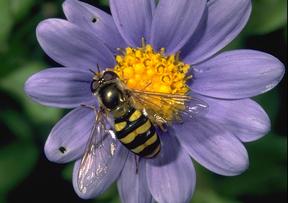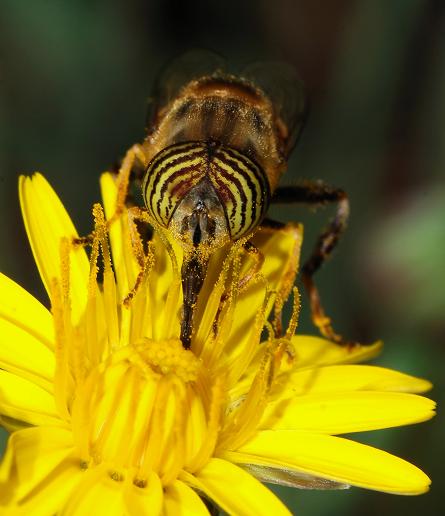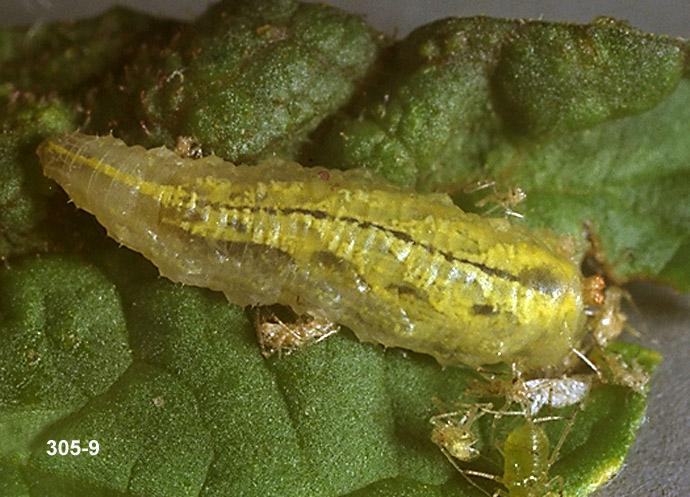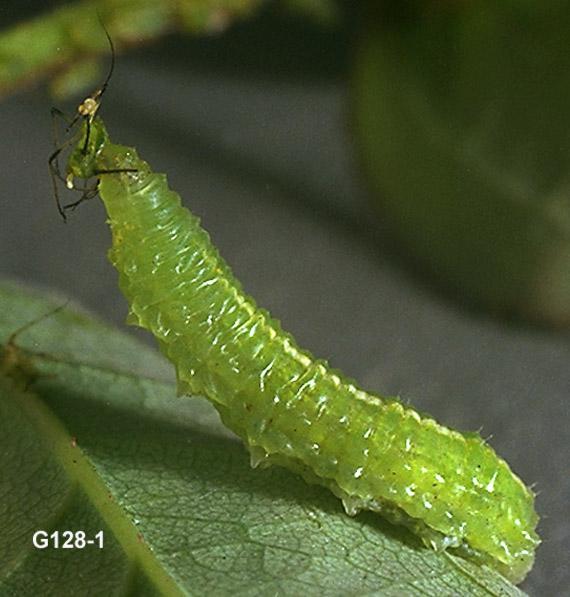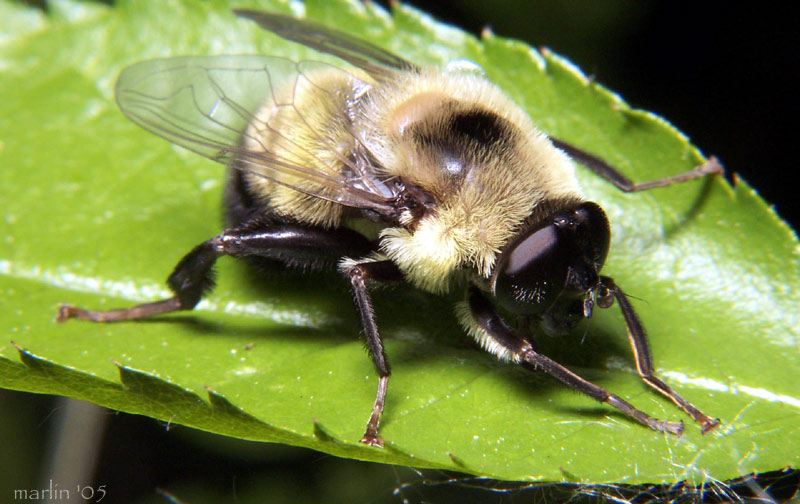|
|
The Syrphid Fly is part of the large family of "Hover Flies" and they are one of the most important and common beneficial bugs in North America. Adult Syrphid flies can often be found hovering over flowers where they feed mostly on nectar and pollen. They hover motionless except for the beating of their wings. Like bees, they are "pollinators" (pollinators move pollen from the male part of a plant to the female part of a plant so that the plant can reproduce). Adult Syrphid Flies look like wasps or bees. In fact, when you see one you will probably think it is a bee because of the color and shape. Most adult Syrphid flies are black or brown with yellow stripes on their abdomens. They are about 1/4 to 3/4 inches long. Syrphid flies are different from bees because the do not sting or bite.
The larva (young that have not changed into adults) live in gardens, in fields and in backyards. They eat aphids. Aphids are tiny little bugs that destroy flowers and plants, and cause millions of dollars worth of damage to farmers' crops. Syrphid fly larvae are about 1/4 to 3/4 inch long. They have long bodies, they are legless, and look like slugs. The Larvae come in many colors: yellow, pink, green, or brown marked with black or white. Take a look at the picture of a larva below. Farmers in California's vegetable producing regions buy Syrphid fly larvae and use them to control aphids in the lettuce fields.
The larvae are commonly found among aphid colonies and move slowly over surfaces of plants, using their pointed jaws to grab aphids and suck out the body contents before discarding the aphid skins. Syrphid fly larvae can consume one aphid per minute.
|
||||
